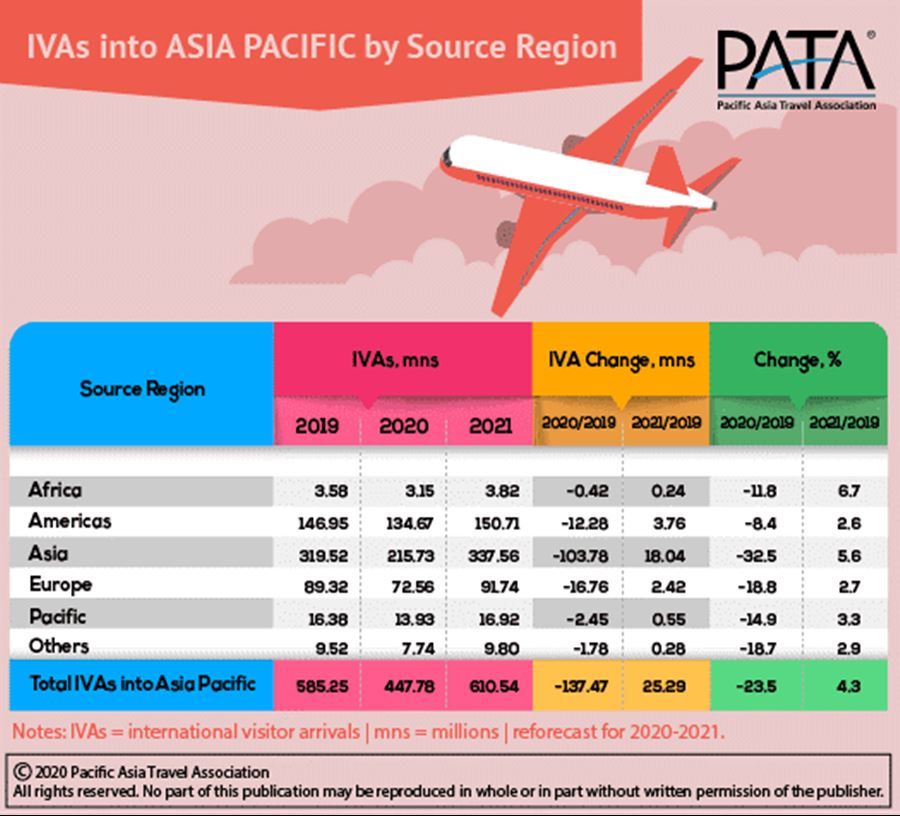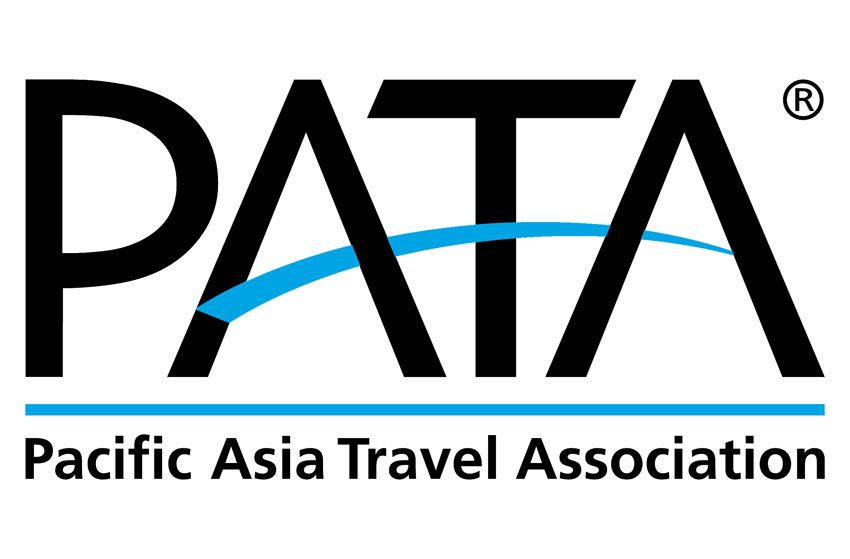Asia is predicted to spearhead a return to visitor growth across Asia Pacific in 2021 according to the newly updated forecasts released last week by the Pacific Asia Travel Association (PATA).
Taking into account the impacts of the COVID-19 pandemic, the volume of arrivals under a most likely scenario is now expected to return to over 610 million in 2021, barring any other unforeseen interventions. This initial recovery is expected to see growth of around three percent above 2019 levels and herald a return to the initial forecast levels shortly thereafter.
This growth in international visitor arrivals (IVAs) is likely to vary by source regions, with Asia expected to rebound with the fastest growth rates relative to 2019, as shown below. The Americas, which is expected to show the lowest contraction in its rate of growth in 2020, is forecast to continue with much weaker growth rates over the years to 2024.
During the expected recovery phase in 2021, Asia is expected to generate significantly improved arrival numbers, rebounding from a loss of almost 104 million visitors between 2019 and 2020 to growth of 5.6% in 2021 relative to 2019, delivering more than 18 million more arrivals over that period.
Arrivals into the Americas are expected to be relatively strong in 2021, with a net increase of 2.9 million visitors relative to the volume generated in 2019. This is expected to be driven largely by intra-regional flows (Americas-to-Americas) which, after a decline of 4.3 million arrivals between 2019 and 2020, are expected to recover rapidly and generate more than 2.5 million arrivals into the Americas relative to 2019.
By the end of 2021, total IVAs into the Americas are projected to be close to three percent above the volume received in 2019. Central America is clearly the strongest generator of arrivals between 2019 and 2021, with more than three-quarters of the additional IVAs coming from that source sub-region alone.
The top five source sub-regions for the Americas between 2019 and 2021 generate a sufficient volume of arrivals into the region to offset continued losses from other source sub-regions and markets.
Into and across Asia, the largest volume increases between 2019 and 2021 are also predicted to be intra-regional (Asia-to-Asia) for the most part, with a rebound from a loss of almost 98 million arrivals between 2019 and 2020 to an increase of over 17 million between 2019 and 2021.
All the source regions of Asia are projected to show growth between 2019 and 2021, with Europe and the Americas in particular, adding increases in arrivals of 2.5 million and 1.7 million, respectively over that period. By the end of 2021, Asia is predicted to have visitor arrivals numbering five percent more than in 2019.
The strongest growth in visitor arrivals into Asia is largely out of the Asian source sub-regions, with strong assistance from Central America and East Europe. Together, these top five source sub-regions are predicted to account for 84% of the overall growth in arrivals into Asia between 2019 and 2021. Over three-quarters of that growth volume is projected to come from three of the five Asian source sub-regions.
The Pacific, as a destination region, is likely to have more subdued growth between 2019 and 2021, almost reaching the same volume of IVAs into the region as in 2019. It is not expected to return to growth beyond that however until 2022 when visitor arrivals are expected to increase by 10.5% above those of 2019.
While arrivals out of Asia are expected to be substantial in 2021 relative to 2019, they are not expected to be substantial enough to offset losses from other source regions, especially the Americas. In 2022, however, all source regions are predicted to deliver substantial growth in IVAs, adding an aggregate increase of a little under three million over the volume received in 2019. At that time, Asia will be the primary source region, delivering 32% of the expected 30.7 million visitor arrivals into the region.
While North America is expected to deliver the most IVAs into the Pacific in 2022, the strongest incremental growth in arrivals between 2019 and 2022 is predicted to come from Northeast Asia, followed by Southeast Asia and then Oceania. The top five source sub-regions into the Pacific in 2022 are expected to deliver close to 83% of the additional IVAs over that period.
“While we can expect to see severely reduced visitor arrivals into Asia Pacific this year, and for some through 2021 as well, there is hope going forward. The travel and tourism sector as we have seen during past calamities, is nothing if not resilient, and we expect to see growth beginning in 2021 and continuing on thereafter. That makes the assumption of course that this pandemic and its associated negative effects are contained and over by then,” said PATA CEO Dr. Mario Hardy. “As we rebuild the travel and tourism sector into the future, it is worth considering whether we want it to be ‘business as usual’ or whether we can initiate new policies, procedures and practices that will enable us to see beyond the vision of growth at all costs. Perhaps now we can give real meaning to the oft quoted mantra of ‘people before profit’ and create a sector that generates employment and business opportunities first that can then deliver memorable experiences to visitors across Asia Pacific and indeed the world.”
“Millions of people have lost their jobs as a result of this pandemic and we need to ensure that as the travel and tourism industry recovers, we create opportunities for their re-employment as a precursor to growing a more sustainable visitor base,” he added.
To gain further insights and answers to questions related to the PATA Visitor Forecasts 2020-2024 and impacts of COVID-19, PATA will be organising a webinar on Thursday, May 14, 2020 at 3pm ICT under the title, “Impact of COVID-19 on PATA Visitor Forecasts 2020-2024”. Participants will hear from guest speakers from the School of Hotel and Tourism Management at The Hong Kong Polytechnic University and Euromonitor International.
Register for this complimentary webinar at https://us02web.zoom.us/webinar/register/WN_XaOyolTGTX2pJVVnTRbDFQ.
Access to the webinar is open to both PATA members, non-members and all interested parties.












